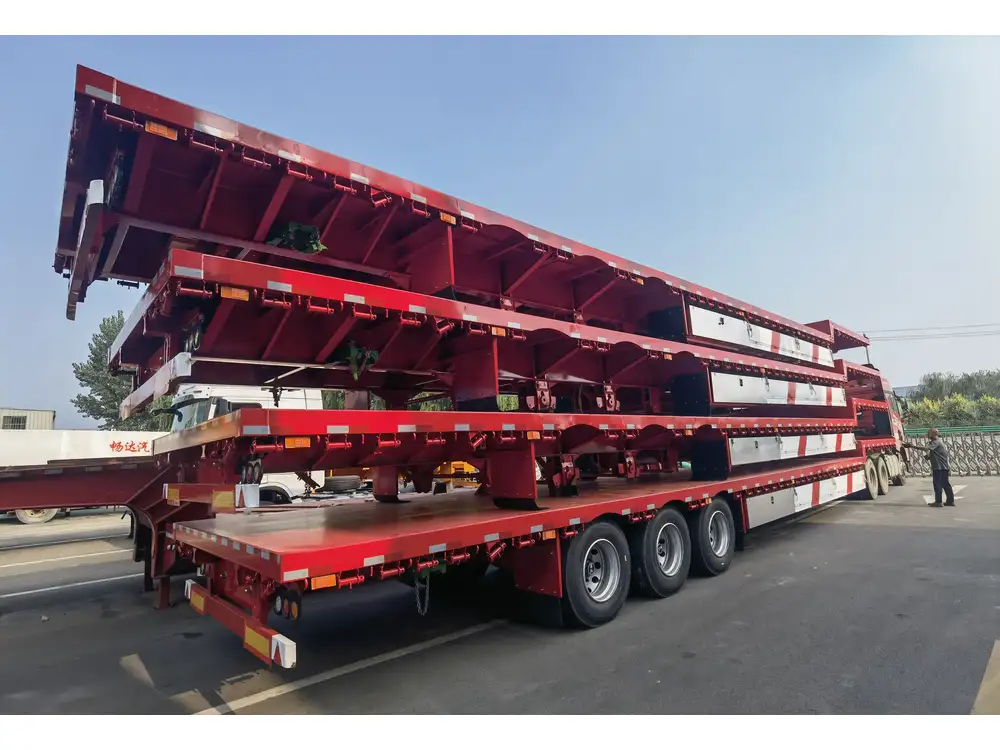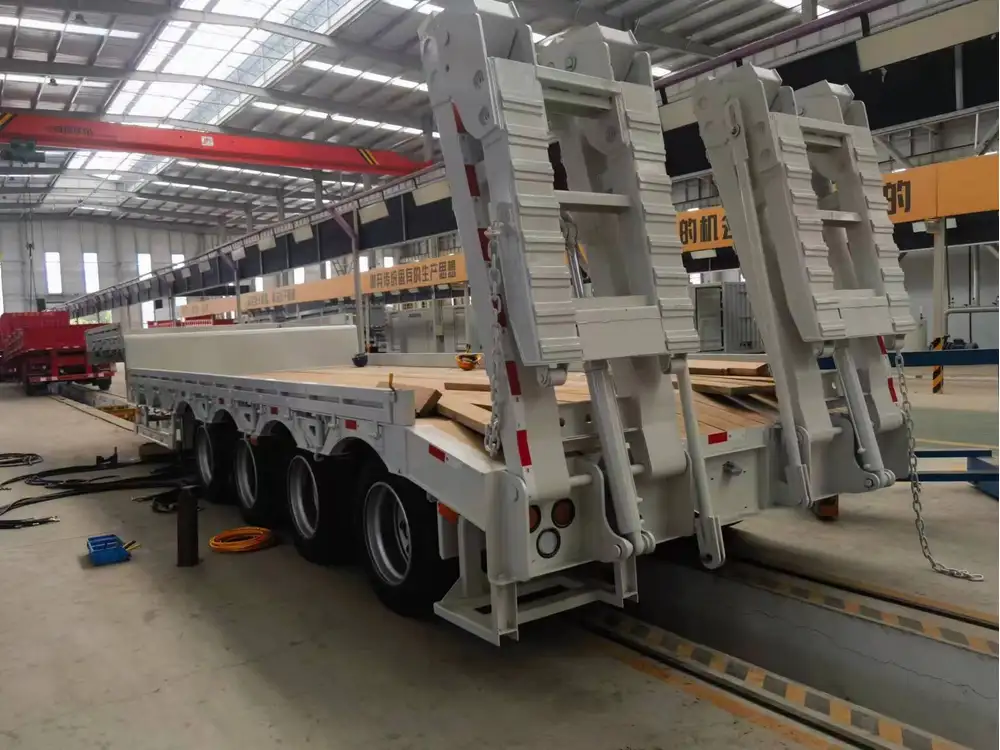When it comes to transporting livestock, particularly cattle, understanding the intricacies of semi-trailer specifications is crucial. The question, “How many cows fit on a semi-trailer?” is not simply a matter of mathematics; it involves considerations related to space, weight limits, and ethical treatment of animals. In this extensive guide, we delve into the factors that determine the capacity of semi-trailers for transporting cows, providing detailed insights that will be valuable for farmers, ranchers, and logistics operators alike.
Understanding the Basics of Cow Dimensions
Average Size and Weight of Cattle
To ascertain how many cows can fit onto a semi-trailer, we first need to understand the average dimensions and weight of cattle.
| Breed | Average Weight (lbs) | Average Length (feet) | Average Height (feet) |
|---|---|---|---|
| Angus | 1,200 – 1,800 | 8 – 9 | 4.5 – 5 |
| Holstein | 1,300 – 2,000 | 8 – 10 | 4.5 – 5.5 |
| Hereford | 1,200 – 1,800 | 8 – 9 | 4.5 – 5 |
| Charolais | 1,300 – 2,200 | 8 – 10 | 4.5 – 5.5 |
| Beef Shorthorn | 1,100 – 1,600 | 7 – 8 | 4 – 5 |
These figures highlight the variability in size across different breeds. Consequently, the cargo capacity can differ significantly based on the breeds being transported.

Space Requirements for Cattle
The space requirements for cattle depend highly on their size and weight but are generally influenced by two key factors: scrambling space (needed for the animal to stand and balance) and personal space. The industry norm suggests a space allocation of about 10-15 square feet per animal, depending on its size and whether it is for short-haul or long-haul transportation.
Types of Semi Trailers for Transportation
Flatbed Trailers
Flatbed trailers provide a versatile option for transporting cattle, especially when combined with portable pens and panels. However, they are not recommended for larger animals due to the risk of them falling off during transit.

Livestock Trailers
Livestock trailers are specifically designed for transporting animals. They usually feature:
- Ventilated sides to ensure adequate airflow.
- Non-slip floors to minimize injury risk.
- Dividing gates to separate different breeds or sizes.
Typical sizes of livestock trailers can vary, but they usually have a capacity ranging from 24 feet to 53 feet in length. Most commonly, a 48-foot trailer is utilized for cattle transport.
Enclosed Trailers
Enclosed trailers provide protection from inclement weather and predatory animals. While they usually offer reduced airflow compared to livestock trailers, they can be essential for transporting young or sick animals.
How to Calculate Cow Capacity on a Semi Trailer

General Calculation
The calculation of how many cows fit on a semi-trailer involves a few essential steps:
Identify the trailer size. Standard trailers for livestock can be anywhere between 48 to 53 feet in length.
Determine the weight capacity. A typical semi-trailer has a weight limit of 80,000 lbs (this includes the truck weight).
Account for the average cow size and the required space. For example, if we allocate 10 square feet per cow in a 48-foot trailer (which has a width of 8 feet), we have:
[ \text{Total space} = 48 \text{ feet} \times 8 \text{ feet} = 384 \text{ square feet} ] [ \text{Cows fitting} = \frac{384 \text{ sq ft}}{10 \text{ sq ft/cow}} = 38.4 ]Consider actual weight. If we take an average weight of 1,200 lbs per cow, then the maximum weight permitted is:
[ \text{Cows fitting by weight} = \frac{80,000 \text{ lbs}}{1,200 \text{ lbs/cow}} \approx 66.67 ]
Final Capacity Determination
Using the calculations above, we can deduce that logistical constraints related to space and weight will often require the transporter to adhere to the lesser figure. In the example above, a 48-foot semi-trailer would optimally transport around 38 cows when accounting for space.
Considerations Beyond Numbers

Ethical Considerations
When calculating capacity, ethical treatment must take precedence. Overcrowding can lead to stress, injury, and even mortality among livestock. It is crucial to ensure adequate space for livestock to move comfortably, lie down, and maintain their well-being during transportation.
Regulations and Compliance
In many regions, laws govern the transportation of livestock to ensure humane treatment. These regulations include loading density restrictions that must be adhered to. Familiarizing oneself with local laws is essential before planning any transport.
Special Cases
Cattle that are younger or of smaller breeds may require less space, while older or larger breeds necessitate more. Always consider this when calculating capacity.

Practical Examples and Scenarios
To further illustrate how many cows fit on a semi-trailer, let’s examine different scenarios based on breed and situation.
Scenario 1: Transporting Beef Cattle
If a rancher wants to transport 20 Angus cattle weighing about 1,200 lbs each, they must consider both height and weight limits.
Total weight:
[ 20 \text{ cows} \times 1,200 \text{ lbs/cow} = 24,000 \text{ lbs} ]Space required:
[ 20 \text{ cows} \times 10 \text{ sq ft/cow} = 200 \text{ sq ft} ]
With an appropriately sized trailer, this load is feasible without exceeding the maximum weight limit or limiting space.
Scenario 2: Mixed Breeds
If you are transporting a mix of 10 Holsteins and 18 Herefords, the variation in size must be accounted for:
Total weight:
- Holsteins (1,500 lbs):
[ 10 \times 1,500 = 15,000 \text{ lbs} ] - Herefords (1,200 lbs):
[ 18 \times 1,200 = 21,600 \text{ lbs} ] - Total weight:
[ 15,000 + 21,600 = 36,600 \text{ lbs} ]
- Holsteins (1,500 lbs):
Space required:
[ 28 \text{ cows} \times 10 \text{ sq ft/cow} = 280 \text{ sq ft} ]

Final Thoughts
As we dissect the various facets of transporting cattle via semi-trailer, it is paramount to strike the right balance between capacity, weight, and ethical considerations. The equation may be simple, yet the implications extend far beyond merely fitting as many cows as possible into a trailer.
The question “How many cows fit on a semi-trailer?” serves as a launching point for a deeper understanding of animal transport logistics. It is imperative to approach cow transportation with an informed and responsible mindset. Balancing transport efficiency with animal welfare not only sustains the industry but also promises a healthier future for the enterprise of livestock farming.
In conclusion, the specifics of semi-trailer capacities, dimensions, and ethical ramifications should guide decisions made in the realm of livestock transport. Education and compliance with standards will pave the way for a smooth transportation experience, benefiting not just the farmers but also the animals they work with.



